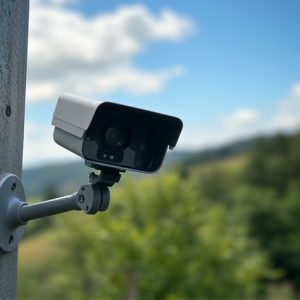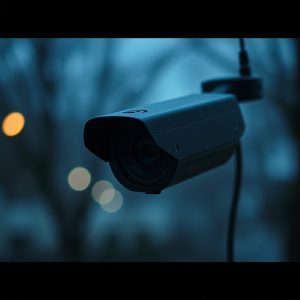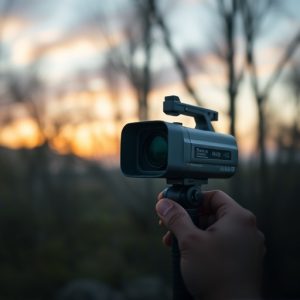Mastering Optical Sensor Detection for Enhanced Home Security
Optical sensor detection is a key component of modern home security systems, designed to identify hi…….
Optical sensor detection is a key component of modern home security systems, designed to identify hidden cameras using advanced algorithms and image processing. To maximize security, professionals recommend strategic placement in high-traffic areas and spaces with odd angles, along with regular calibration and updates. Comprehensive security sweeps should employ thorough inspections, covering common areas and neglected spots like ceiling tiles and behind appliances, utilizing advanced optical sensors for accurate detection. Regular updates on best practices and new camera technologies are essential to maintain a robust home security system that employs both optical sensors and thermal imaging for optimal protection.
Uncover the secrets behind optical sensor detection with our comprehensive guide. Learn how professional methods revolutionize home security by identifying best hidden camera locations. From understanding the basics of optical sensors to employing advanced techniques, this article navigates the intricate world of security sweeps. Discover tools and practices that enhance your home’s protection against covert surveillance. Ensure peace of mind by knowing the most effective strategies for detecting and deterring hidden cameras.
- Understanding Optical Sensor Detection: Unveiling the Basics
- Best Practices for Conducting a Comprehensive Security Sweep
- Identifying Hidden Camera Locations Using Advanced Techniques
- Enhancing Home Security: Professional Methods and Tools
Understanding Optical Sensor Detection: Unveiling the Basics
Optical sensor detection, a cornerstone in home security systems, involves sophisticated technology to identify and locate hidden cameras. These sensors, often overlooked, are designed to pick up on subtle visual changes, making them highly effective at uncovering clandestine surveillance devices. By utilizing advanced algorithms and image processing, optical sensors can detect even the smallest pixels or irregular patterns indicative of hidden camera components.
When it comes to best hidden camera locations in the home security context, understanding how these sensors work is key. Professionals recommend being vigilant in high-traffic areas, such as hallways and living rooms, where motion triggers could go unnoticed. Similarly, pay attention to spaces with odd angles or recesses that might conceal small cameras. Regularly updating and calibrating optical sensor systems ensures their continued effectiveness against evolving technology used in surveillance equipment.
Best Practices for Conducting a Comprehensive Security Sweep
When conducting a comprehensive security sweep, especially for hidden camera detection, it’s crucial to employ professional methods that cover all bases. Start by thoroughly inspecting common areas like corners, behind furniture, and under surfaces where cameras might be hidden. Utilize advanced optical sensors that can detect even the smallest visual disturbances or unusual reflections. These tools are designed to pick up on subtle changes, making them invaluable for identifying covert recording devices.
For optimal results, sweep every inch of your space systematically. Pay close attention to areas often overlooked, such as ceiling tiles, electrical outlets, and behind appliances. Remember, skilled installers can hide cameras in unexpected places, so a meticulous approach is essential. Regular updates on best practices and staying informed about new camera technologies will ensure you remain one step ahead in the battle for home security.
Identifying Hidden Camera Locations Using Advanced Techniques
Identifying hidden cameras has become a critical aspect of home security in today’s digital age. Advanced techniques, such as specialized optical sensors and thermal imaging, are now available to detect these covert devices. By utilizing these methods, professionals can uncover hidden camera locations that might otherwise go unnoticed.
Optical sensor detection involves scanning surfaces for subtle variations in light reflection or interference patterns caused by cameras’ lenses and infrared emitters. Thermal imaging, on the other hand, detects heat signatures, which can reveal the presence of electronic devices like cameras. These techniques are invaluable when searching for best hidden camera locations, ensuring peace of mind and enhancing overall home security measures.
Enhancing Home Security: Professional Methods and Tools
In today’s digital era, enhancing home security has become a top priority for many homeowners. One effective method to achieve this is through the strategic placement of hidden cameras. The best hidden camera locations within a home can significantly deter potential intruders and provide valuable surveillance footage. Professionals often recommend positioning these devices in areas that offer optimal visibility yet remain discreet. For instance, cameras near entry points like doors and windows, or in corridors and living spaces, can capture unwelcome visitors without drawing attention to themselves.
Professionals also utilize advanced tools to ensure the effectiveness of these security systems. This includes high-quality optical sensors capable of detecting motion with remarkable accuracy, as well as remote monitoring software that allows homeowners to stay alert even when away from home. By combining these professional methods and tools, homeowners can create a robust security network, making their properties safer and more secure.
Optical sensor detection, when combined with professional methods, is an indispensable tool for enhancing home security. By understanding the basics and employing advanced techniques, individuals can effectively identify hidden camera locations and mitigate potential security risks. Whether it’s through comprehensive security sweeps or using specialized tools, these practices ensure that your personal spaces remain safe and private in today’s digital age. Remember, staying proactive about home security is key to safeguarding your privacy, especially when addressing the best hidden camera locations.


